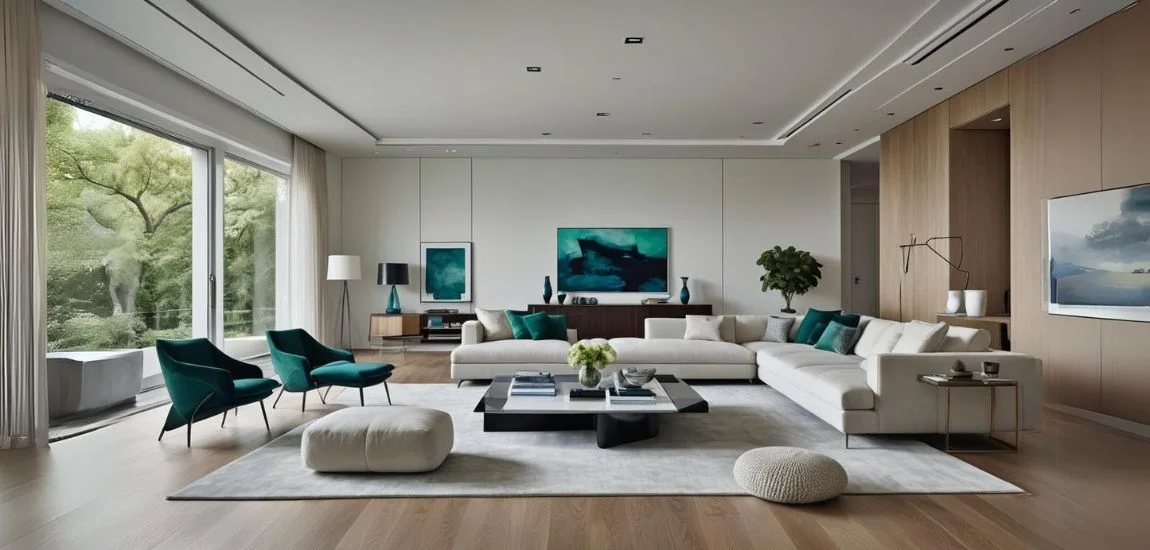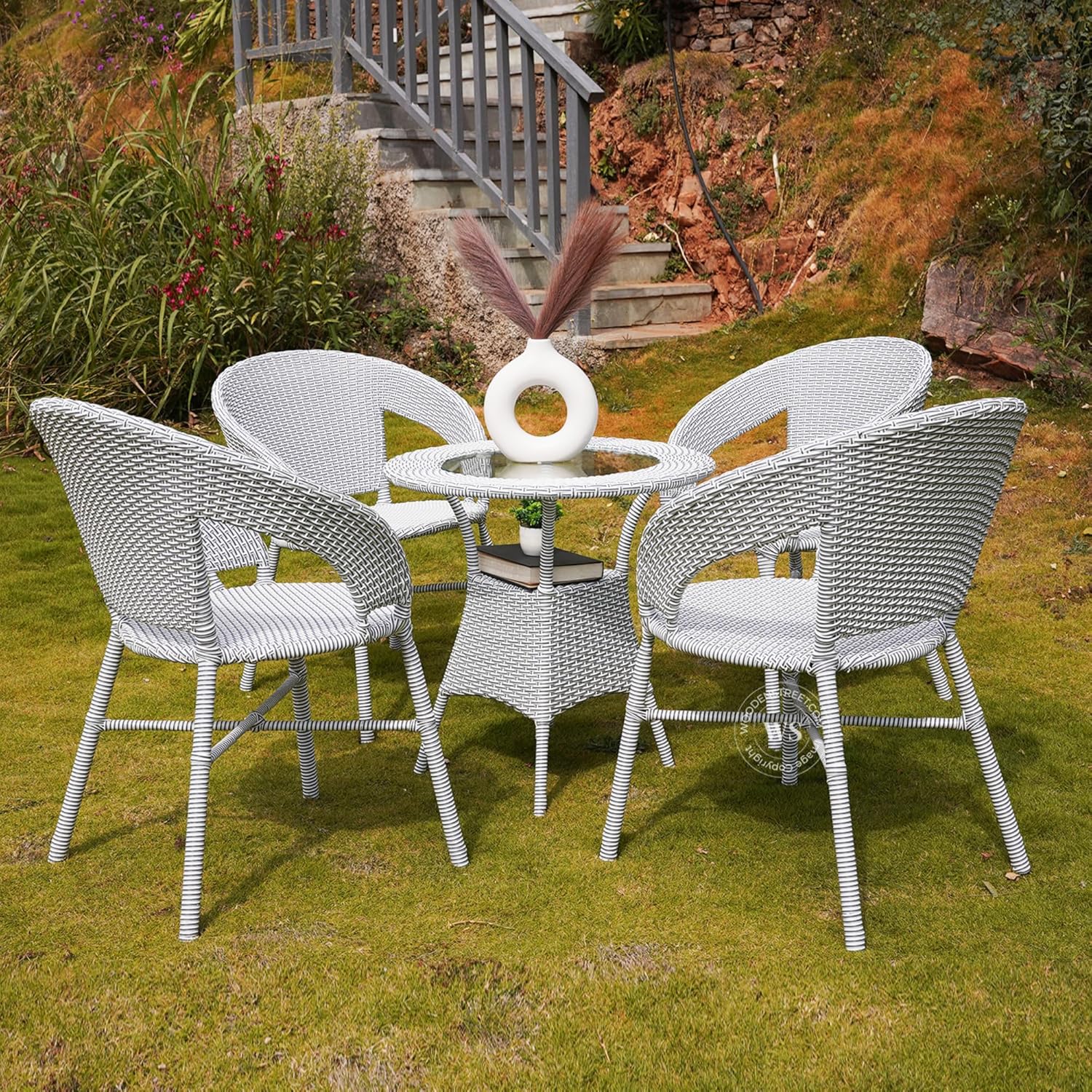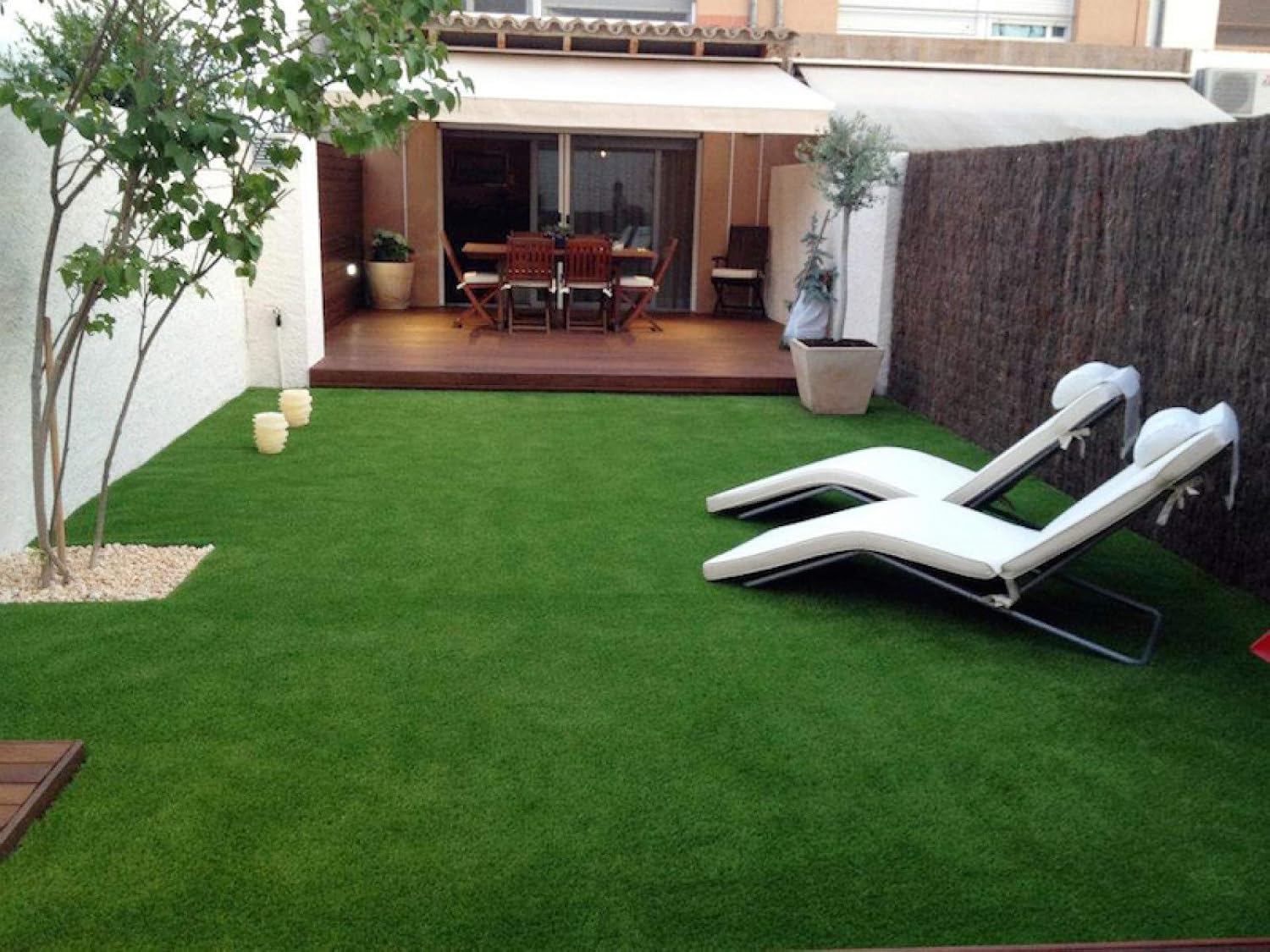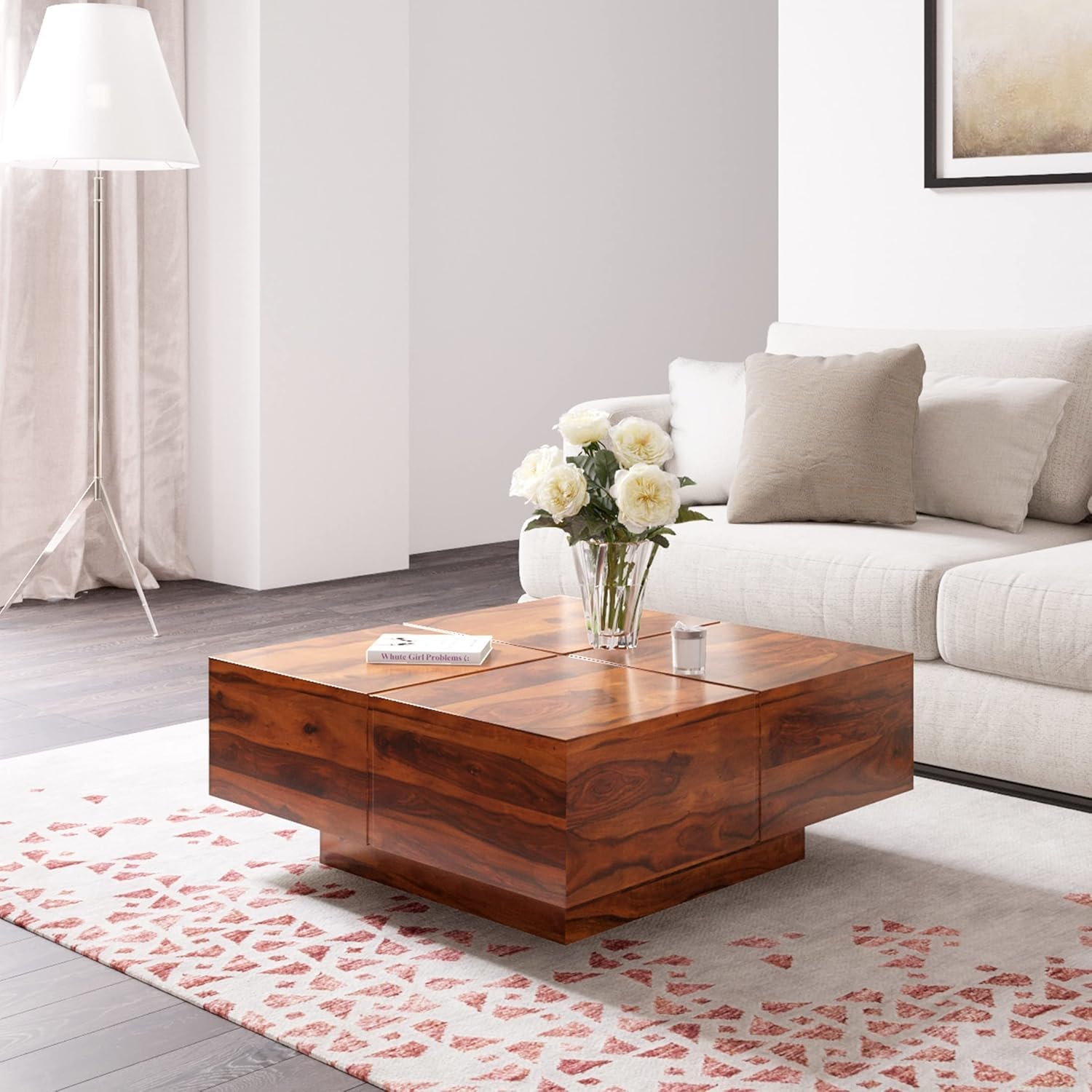Interior design is a secret language, whispered in colours, textures, and shapes. It's the art of crafting spaces that resonate with the soul, where function meets fantasy.
But behind the aesthetics lies a structured framework - seven principles of design that guide the design maestro.
From understanding the interplay of light and shadow to orchestrating a symphony of proportions, these principles are your compass in transforming a house into a home.
Let's embark on this design adventure with Alacritys and understand the principles of interior design concepts deeply
TL;DR: For The 7 Principles Of Design
Mastering the principles of design is the foundation of exceptional interior spaces.
This guide explores the 7 essential design principles—balance, unity, rhythm, emphasis, contrast, proportion, and attention to detail.
By applying these principles of interior design, you can transform both residential and commercial environments into cohesive, functional, and visually appealing spaces.
Whether through symmetrical harmony or bold contrast, each principle of design contributes to spatial balance, style consistency, and purposeful aesthetics.
From crafting inviting living rooms to brand-aligned commercial spaces, understanding these principles of design empowers you to create interiors that blend form with function and truly reflect the essence of their users.
What Is The Advantage Of Knowing The 7 Principles Of Interior Design?

Firstly, knowing the principles of interior design gives you the power to create spaces that are visually appealing and functional.
Imagine walking into a room and instantly feeling that everything is in its place. That’s the magic of understanding these principles like balance in design, unity, and proportion in design.
These principles act as a guide, helping you to make decisions that lead to a well-organized and attractive space.
Now talking about the advantage, knowing these design principles can help you get the ability to solve design challenges effectively.
For example, if a room feels too crowded or too empty, you can use the principle of balance in design to adjust the placement of furniture and decor.
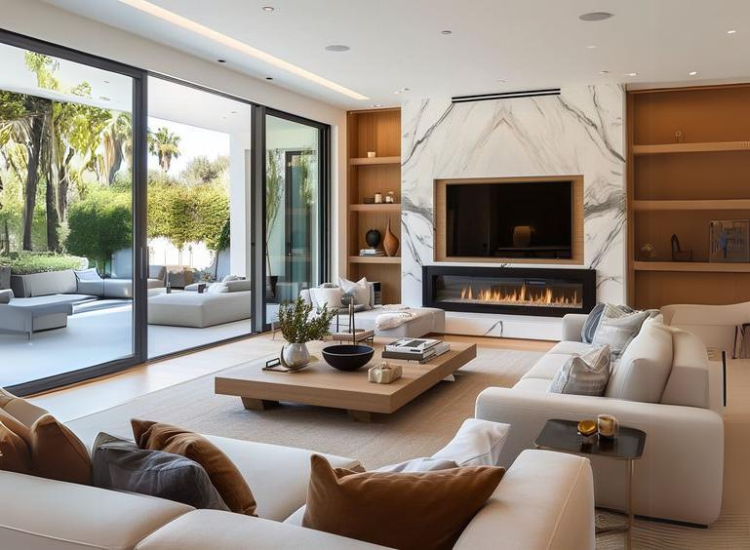
This knowledge makes the process of designing a space less overwhelming and more enjoyable, allowing you to create interiors that reflect your style and meet your needs.
The 7 Principles Of Design In Interior And Their Adaptation in The Interior
Balance: Harmony in Symmetry And Asymmetry
Picture a room where the harmonious symmetry in design creates a sense of balance and tranquillity, making it feel like a peaceful oasis.
That’s the magic of balance in design. It's like finding the perfect rhythm in a song; when done right, it creates a sense of harmony and ease. Let's have a quick look at the two types of balance in design principles.
A. Symmetrical Balance
Symmetrical balance is like the classic elegance of a well-organized symphony. It’s about arranging elements so that they mirror each other around a central axis.
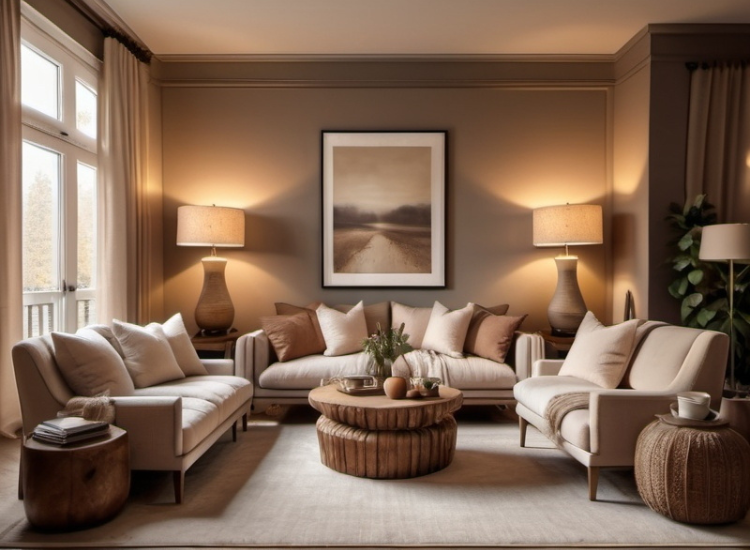
Picture a cosy living room where a pair of identical armchairs flank a central coffee table, and matching lamps light up each side of the room.
This setup is often seen in traditional designs, where symmetry in design helps create a sense of order and formality.
Think of it like decorating a dining table with matching place settings on either side—everything looks neat, coordinated, and visually pleasing.
B. Asymmetrical Balance
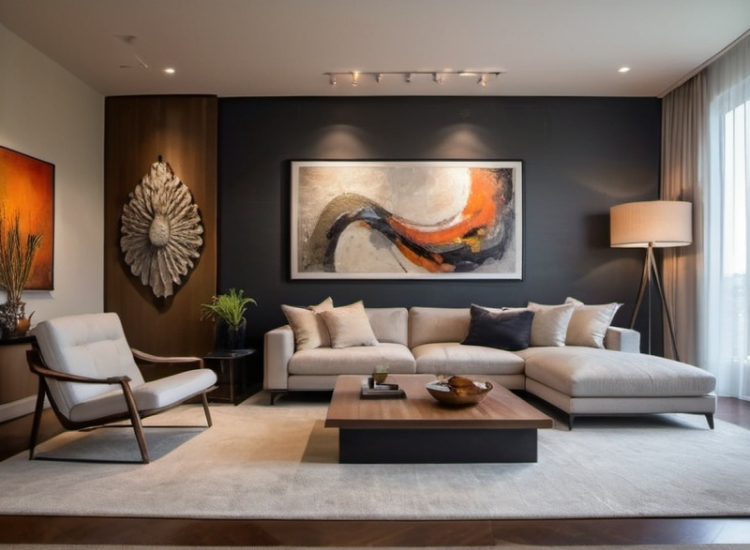
Asymmetrical balance is where creativity truly shines. Unlike symmetrical balance, which mirrors elements for a classic, orderly look, asymmetrical balance allows for a more dynamic and innovative arrangement.
This approach involves placing different objects in a way that achieves visual equilibrium, creating a sense of balance through contrast and variation.
For example, imagine a living room with a large, bold piece of artwork on one wall and a stylish, smaller sculpture on a nearby shelf.
While the items aren’t identical, their placement and size create a balanced effect that feels dynamic and engaging.
This type of balance in design is a favourite in modernism in interior design, where the goal is to create spaces that are visually stimulating and full of character.
Pro Tip: In both symmetrical and asymmetrical balance, the key is to ensure that no part of the room feels too heavy or too light.
By carefully considering the placement and the symmetry in design of your elements, you can create a space that feels harmonious and thoughtfully designed.
Unity: Cohesion In Design Elements
Unity is the principle of design that puts all of the various elements of a room into a cohesive, harmonious whole.
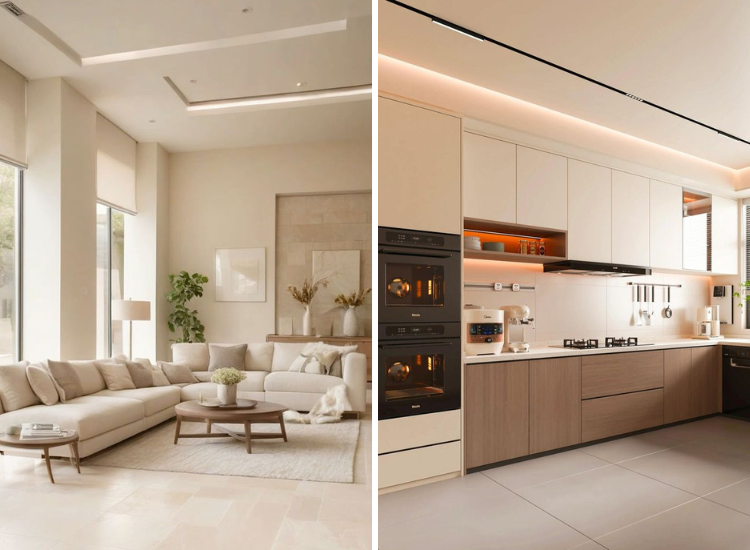
It's a space wherein every component in home interior design—furniture, colour, pattern, or ornament—functions with another component in a very coordinated way and does so with the intent to project a unified look.
Think of unity as the ‘glue’ that holds a room's interior design theme together to feel complete and finished.
To create a unified home design, start with how the different elements interrelate with one another. One way this can be done is through colour schemes.
Pick a colour scheme and stay with it throughout the room. For example, if you pick a series of blues and greens for your home interior design, using those colours in the walls, furniture, and accessories is what will bring it together.
This colour harmony ensures that no one element is to contrast with the others, making the space balanced and purposeful.
Another way to achieve unity in design is to have a pattern repeated over different elements in your home interior furniture.

For example, if you have some floral pattern in your curtain, you can repeat the like in your throw pillows or rugs; it helps create visual rhythm and gives the home design a more organized look.
Even when patterns differ in size or colour, so long as they have some common motif, they contribute to unity.
Themes would also create a unity effect. By focusing on one particular interior design theme, it may either be coastal, industrial, or minimalist, it guides you on which interior furniture, decoration, and even colours to choose.
Items in the room, from the furniture of a home interior to even the design of interior walls, could then be chosen based on this theme so that an overall feel of consistency and welcoming tone can be created.
In addition to the above-mentioned techniques, unity in design can be achieved using some of the principles of interior design such as proportion and scale.
Rhythm: Creating Movement And Flow
Rhythm in design is about creating a sense of movement and flow within a space. In the same way, a song with a good beat can get someone tapping their feet, rhythm in design principles will direct a view and create a dynamic, engaging space.
Repetition of the elements in home design is the most direct way to create a sense of rhythm. Through repeating certain design elements, you can perceive continuity and flow throughout a space.
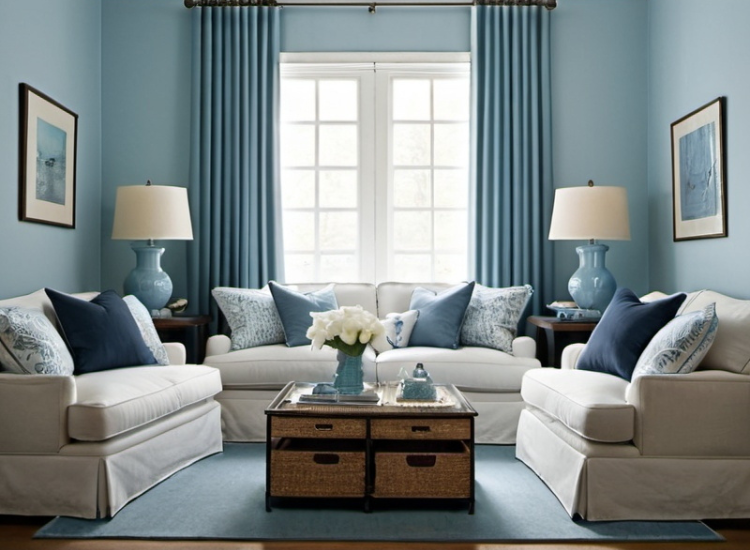
Consider using colours to create this. For example using a soft blue colour on the walls, cushions, and curtains creates a rhythm.
Rhythm in design principles ties the room together and helps guide the viewer’s eye making the room feel balanced and cohesive.
Patterns, like colour, play a big role in creating rhythm in design. For example, if you have a geometric pattern on a rug, repeating this pattern in throw pillows or artwork will create a visual rhythm that helps guide a viewer’s eye through a room.

This technique brings a seamless look, where different elements relate to each other and create harmony and flow.
Contrast in design is another principle of design to strengthen rhythm. Bringing in contrasting elements in the interior design like a bold dark chair next to a light-coloured sofa creates focal points that draw the eye.
This contrast can be another way to add a dynamic quality to a space. When used effectively, contrast as well as aesthetics in interior design can be visually exciting while still maintaining rhythm.
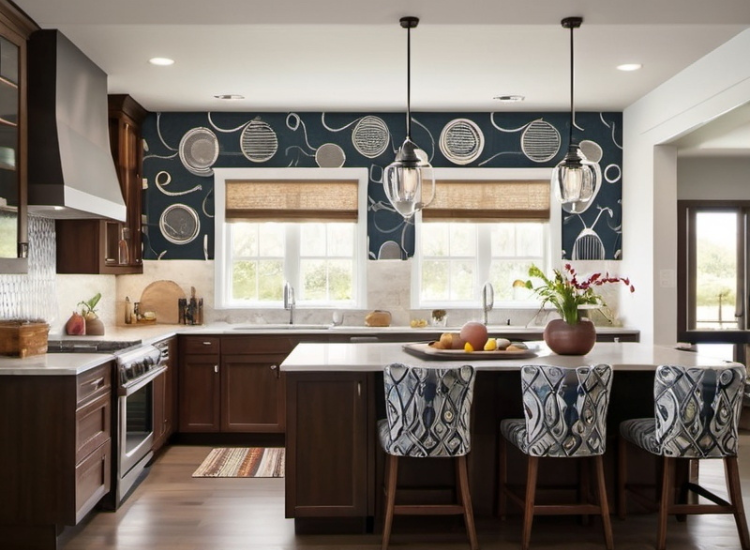
If we look at how rhythm in design principles could be used practically, let's say you are undergoing your home renovation.
The rhythm of the room can be emphasized by placing several matching pendant lights over the kitchen island, repeating an arc along the length of the room.
Additionally, other elements of a room interior design theme, such as a repeated motif in textiles and wall art, can help emphasize rhythm, making a space feel purposeful and unified.

See How We Can Reveal Fantastic Designs For All Needs!
- Interior Design - Enhance interiors with real result.
- Architecture - Revamp lifestyle with genuine ideas.
- Landscape - Elevate senses, ensure fair designs.
- Vastu - Calm anxiety, apply science correctly.
Emphasis: Focal Points And Visual Hierarchy
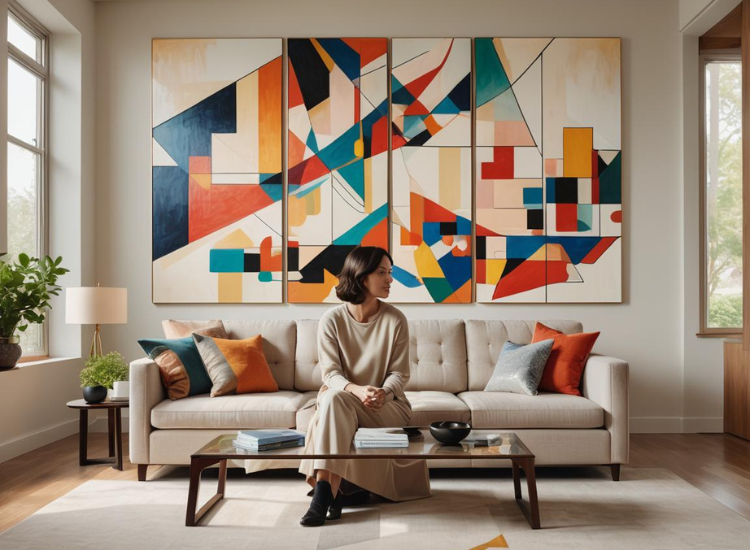
The key aspect expressed in design principles is the creation of focal points and the establishment of a visual hierarchy. They can draw the viewer's attention to specific elements.
We develop this key principle by emphasizing the need to organize a space and promote emphasis within it.
In common spaces, focal points are key elements that attract attention and form the centre of interest. These serve to create a visual anchor within the space while creating aesthetics in interior design.

For example, a focal point could be any unique or striking element, such as an original piece of artwork, a home interior furniture piece that has ornamented a space for years, or a textured and coloured wall.
Moreover, research has explained how to establish a visual hierarchy in home design. Elements are organized in a hierarchy to direct the viewer's attention. You can do this by using different design tricks:
- Contrast: The way that elements in a room are designed to contrast, such as colour or size, aids in how emphasis in design is developed. For example, a darker object on a bright background will emerge more.

Scale and Proportion: Scale can be used to emphasize a focal point. Larger elements will naturally draw your attention, so the design can be organized in a way that a larger element as per the principle of design is in a prominent location in that space.
Smaller elements should be included as long as they do not become the focal point in the space.
Placement: Placing key elements in a space is an effective way to emphasize the space with design principles. This means placing a key element above your line of sight or in an interior wall design to draw your attention.
Contrast: Highlighting Differences For Impact
Contrast in design isn't just about making things pretty. It isn't even just about creating visual interest. It's quite literally the hand that leads the eye to our intended focus.
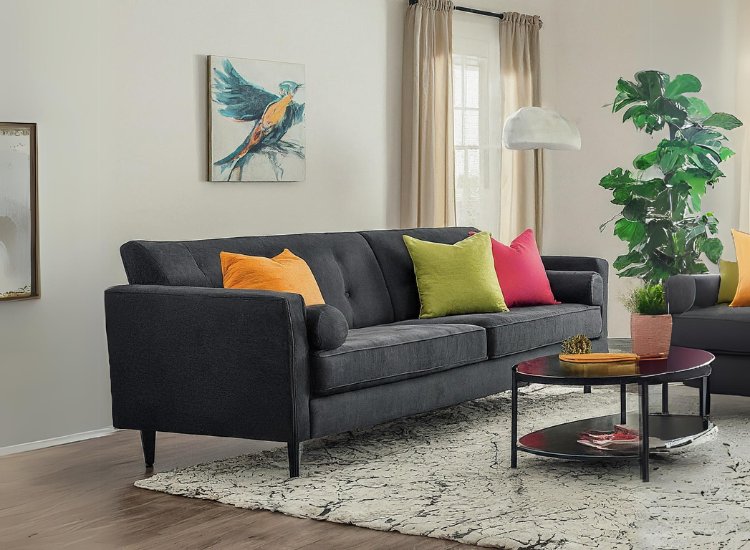
In design, be it graphic design, home interior design, or commercial interior design, contrast can take on many forms. We get to play with colour, size, shape, texture, value or contrast to create a visual experience that is meant to capture the viewer.
Let's start breaking down the contrast in the principle of design into the different forms we can experiment with.
Colour Contrast: This is probably the most basic form of contrast. It's the most literal interpretation of using colours that are opposite or bold next to each other.

For example red and blue. Or in the fashion world, you would consider red lipstick with an all-white outfit.
You might want to remember that using too much contrast can lead to sensory overload, which isn't necessarily the goal. It creates an asymmetrical balance too.
Texture Contrast: This type of contrast is like running your hand on a rough surface and a smooth one directly afterwards. When you combine rough textures with slippery, smooth textures you get tactile texture contrast.
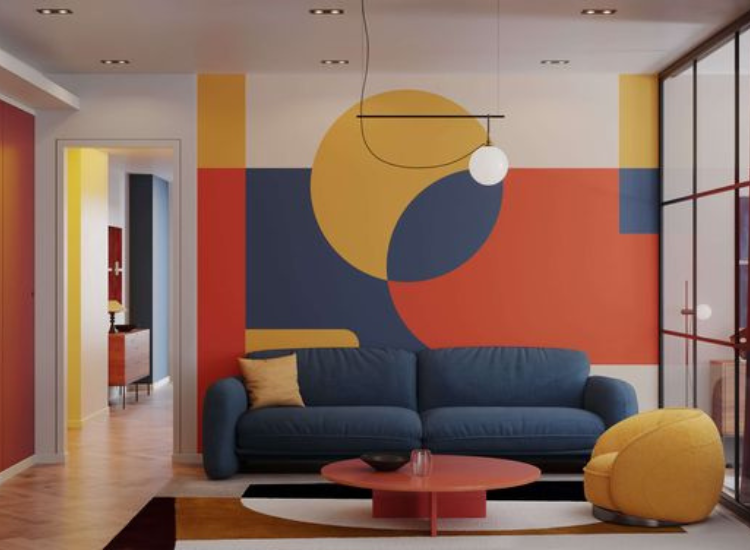
Shape contrast is the last example of contrast in design we'll talk about here. You can mix with shapes to add contrast. This can be both geometric shapes (full of squares and circles) and organic/free form.
Pro Tip: A monochrome living room design looks elegant, but adding contrasting elements makes it more interesting.
Proportion: Achieving Visual Harmony

Proportion is an essential principle of design that makes the static come alive, transforming mere composition into visual harmony perfection.
Proportion in design is not just about size; it is about the relational dance amongst elements in a space, or how each part interacts with the whole.
It is a lot like the rhythm section of a band – it keeps everything together, and in balance, and ensures the performance doesn't fall on its face.
Proportion in design leads our eyes, it helps us understand what is important, and it packages up a bow on the visual aesthetic so to speak.
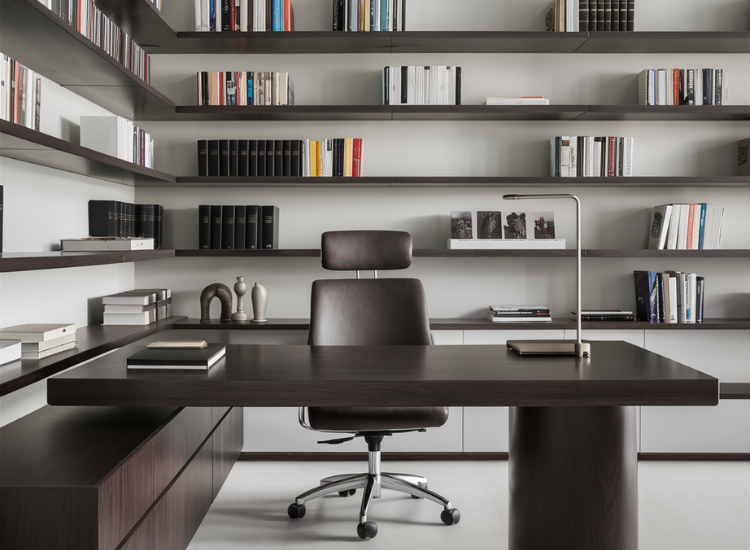
Visual Harmony: Without proportion, aesthetics in interior design can't achieve visual harmony.
Properly proportioning elements within a design means that the elements within it are in balance with each other creating a unity or equilibrium in a composition.
Balance and Hierarchy: When the sizes of elements are adjusted to create a sense of hierarchy—as in the prominence of certain content—designers are guiding the viewer’s eye.
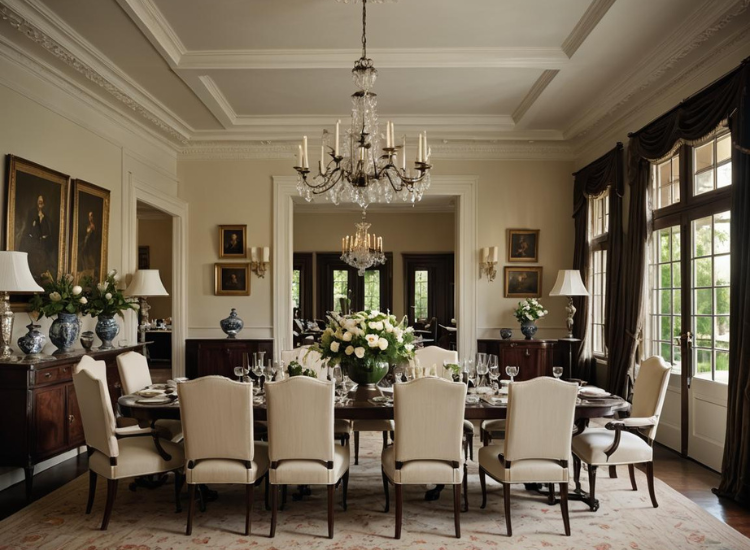
Control the viewer's eye using design principles to determine what gets attention, what doesn't, and to what degree. It's like acting as the movie director behind the camera – knowing which things are front and centre versus mere background actors!
Consistency: Treating proportions consistently across or amongst elements creates unity in design.
When considering proportional principles within typography, imagery, or various graphic elements, coveting a consistent approach in proportions amongst each part, in a design lends itself to a visual language that is contiguous.
Details: Elevating Design With Finishing Touches
The spectacle of the big picture—the graceful lines, vibrant colours, and vast open spaces—is captivating. Yet, it's the details in design, those small and seemingly insignificant elements, that elevate a simple interior design from great to extraordinary.
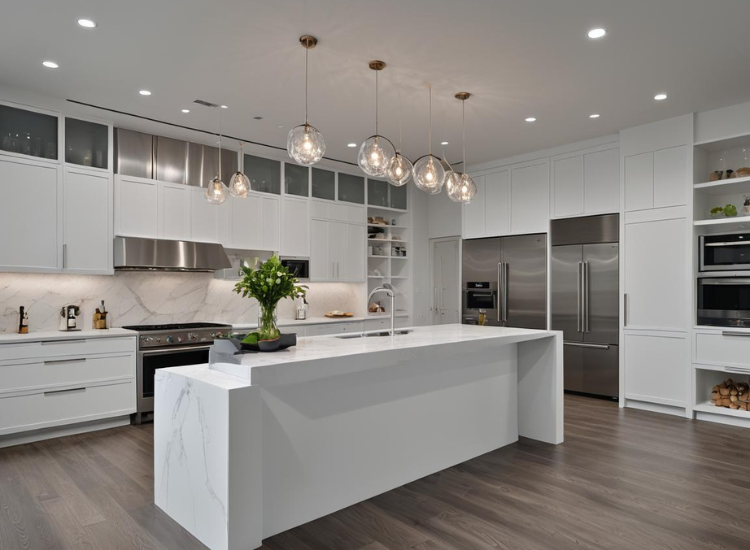
Details in design provide the finishing touches to a design that gives it depth, character, and personality. Details function as the punctuation of the design story, emphasizing and clarifying how the story should be understood.
Details are the vital component of the principles of interior design and the locale where style and function meet.
The function of details involves making the design aesthetically pleasing and a reflection of the consideration with which the design was formulated.
Experts rely on details in design to shape a space. The selection of doorknobs and light effects can alter the mood of a space.
A vintage crystal doorknob might evoke reminiscences of elegance and nostalgia, whereas clean, modern fixtures might give a contemporary sense of sophistication.
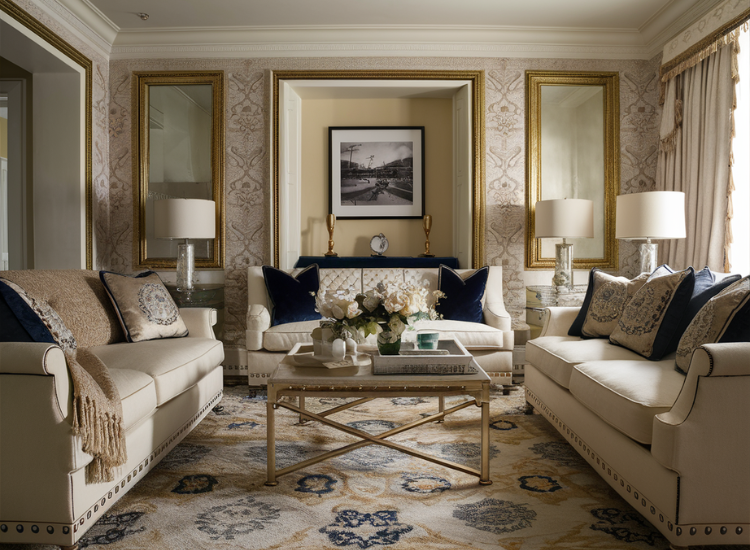
Just as a small throw pillow, the colour of a picture frame, or the pattern of a rug; each important detail, though small; imparts relative value to a space.
There are many examples we can use to demonstrate this same point: details in living room design ideas make a difference.
Custom Millwork: Tailored woodwork, including crown moulding, wainscoting, and custom cabinetry, is a major detail that generic alternatives just cannot match.
A custom is a level of craftsmanship and quality that just cannot be matched; it is architectural jewellery that only adds greater value and completes the narrative of the room.
Lighting Fixtures: Lighting fixtures have the potential to be something more than just a source of illumination in home design.
For example, a chandelier can act as the focal point of a room, spreading lovely shadows, and lighting effects and bringing glamour to a room.

Textiles and Fabrics: Your choice of textiles and fabrics will inject texture, colour, and pattern into a space. It is in the details like embroidery, fringes, or unique weaving techniques, that will take a simple interior design to the next level, making it more inviting and personalized.

See How We Can Reveal Fantastic Designs For All Needs!
- Interior Design - Enhance interiors with real result.
- Architecture - Revamp lifestyle with genuine ideas.
- Landscape - Elevate senses, ensure fair designs.
- Vastu - Calm anxiety, apply science correctly.
Incorporating The 7 Principles Of Design In Home Interior And Commercial Interior
The seven principles of interior design are very important yet practical to shape your home interior design as well as commercial interior design. These tenets serve as the framework for designing cohesive and appealing settings in our homes and commercial spaces.
We will explore how these design principles manifest in different contexts to ensure each design creates meaningful environments.
Home Interiors
In the sanctuary of our homes, these principles work in conjunction to design spaces that are visually appealing, deeply personal and functional.
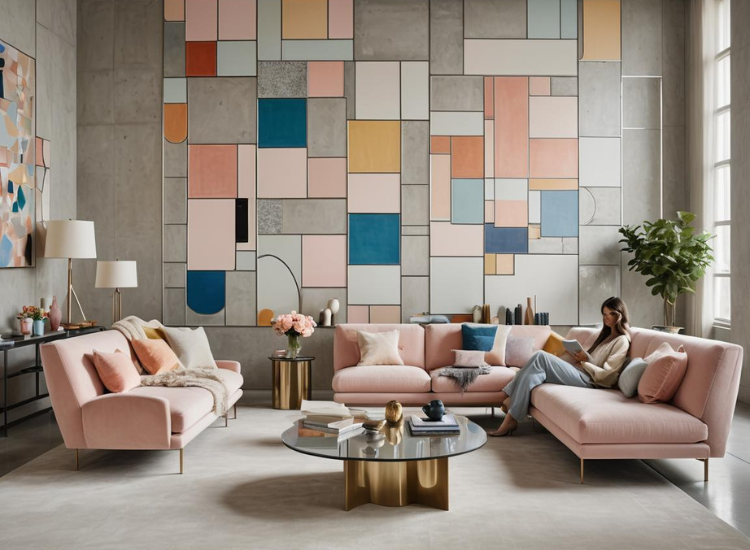
1. Balance
The concept of balance in design could be symmetrical or asymmetrical and it ensures that every component in a space feels visually stable and harmonious.
For instance, putting two identical lamps on either side of a sofa will create a symmetrical balance, while an oversized chair paired with a much smaller side table is reflective of asymmetrical balance.
2. Harmony And Unity
This principle of design accentuates cohesiveness in style, colour schemes, and materials to allow for a unified scheme in space. Common colour palettes or repeated themes can unify different areas of the home interior, creating a sense of wholeness.
3. Rhythm
Repetition, progression, transition, and contrast in design are the components of rhythm in a space. Repetition or gradual colour changes can cause the eye to physically move around a space, creating energy and a sense of movement.
Commercial Interiors
Commercial spaces, such as offices or hotels, necessitate a different perspective, focusing on functionality, brand identity, economy of movement in the space, and customer interactions.

Let’s see how these design principles can help in commercial spaces to create an environment that is not only visually appealing but also highly functional, efficient, and inviting for both clients and employees.
1. Proportion And Scale
Proportion is critical in commercial interior design to ensure that spaces are inviting and accommodate the function for which it's intended.
For example, in a restaurant, tables and chairs should be appropriately scaled for the patrons to sit comfortably and walk around, fitting the ambience and capacity.
2. Emphasis
Emphasis in design could be creating focal points to help target light, create a personality or a sense of luxury and direct focus to key features or areas within the space.
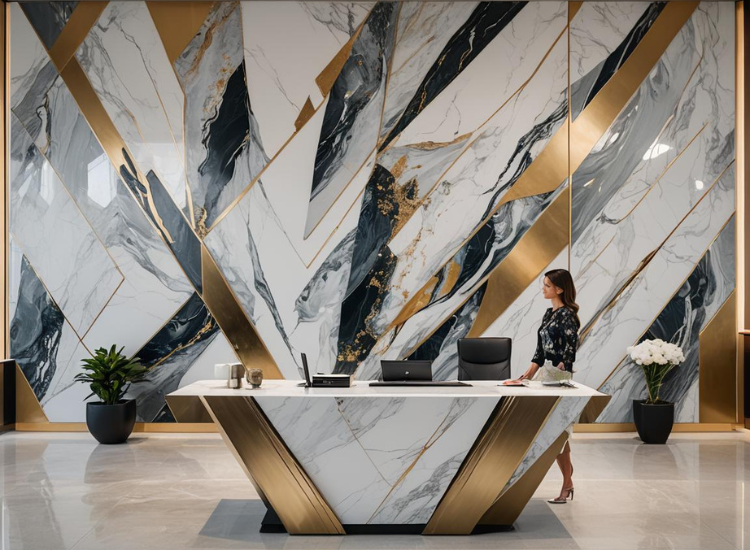
This may be something like a reception desk in an office lobby, drawing you in and channelling the visitor’s experience, or beautiful lighting effects in a retail store, creating interest and attraction.
4. Contrast
Contrast is another principle of design that can be used in hospitality or commercial projects to highlight different features in the environment.
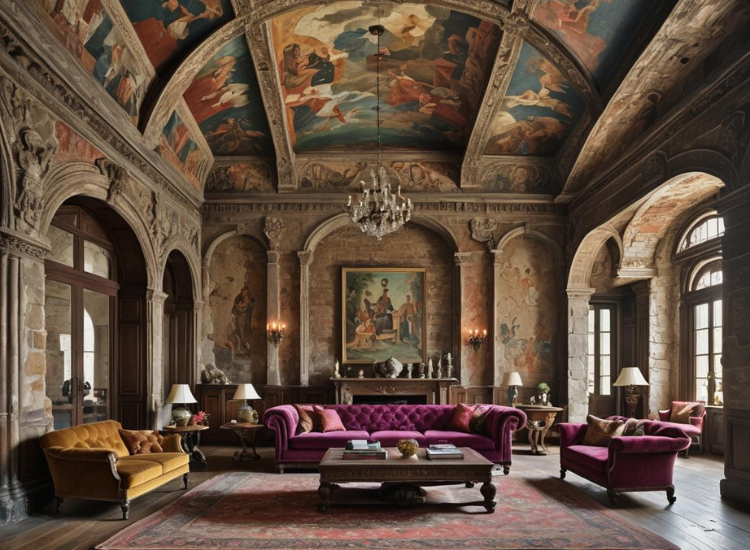
It is possible to juxtapose modern interior furniture against an old building in a boutique hotel, creating a unique blend of old and new that enriches the guest experience.
4. Details
We noted earlier the importance of paying attention to detail in both home and commercial interiors.
Details such as signage, transitions in flooring, or fixtures and finishes can make the difference between a great brand story or just another commercial space.
Applying these seven principles of design to interior design is going to make a space that looks good, works and is suitable for its intended use and identity. Whether it's a snug home, coffeehouse or a commercial workplace.
How Do These 7 Principles Of Design In Interior Design Impact Our Lives?
How do these seven principles of interior design truly show up in our daily lives, transforming spaces into meaningful experiences? It's like realizing your favourite song has lyrics that perfectly capture your day.
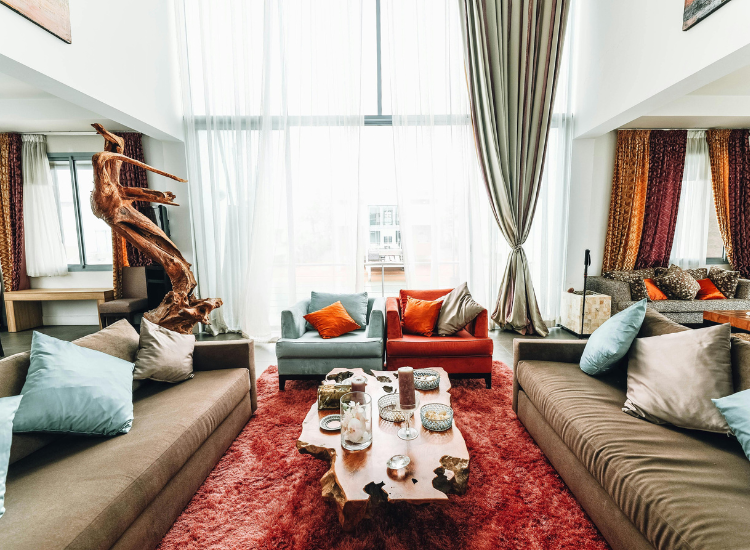
These principles are the gems that turn a house into a home and an office into a hub of productivity. Let's explore how these principles work their magic in everyday spaces.
Balance: Finding Our Center

Ever stepped into a home interior that just feels perfectly aligned, from the furniture to the attractive lighting effects? That’s balance in action. It’s similar to how a seamless morning routine sets the right mood for the entire day.
In design principles, balance creates a sense of stability and calmness along with symmetry in design, making our spaces feel welcoming and harmonious. It's like hitting the sweet spot in life where everything aligns perfectly.
Harmony And Unity: The Comfort Zone
Harmony and unity in design are all about creating a space where everything fits together seamlessly, much like a favourite playlist where every song flows into the next.
This principle of design ensures that our homes reflect who we are, offering comfort and familiarity.
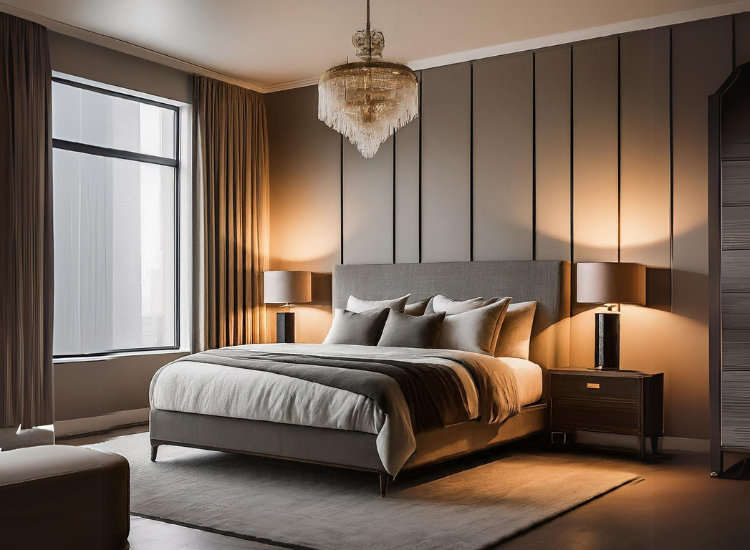
Think about how cosy it feels when your space is filled with items that tell your story, from cherished photos to your collection of vintage records. It's like being wrapped in a warm blanket on a chilly day.
Rhythm: The Beat That Moves Us
Rhythm in design is like the underlying beat in music that gets us moving. It guides our eyes through space, creating a sense of movement and energy.
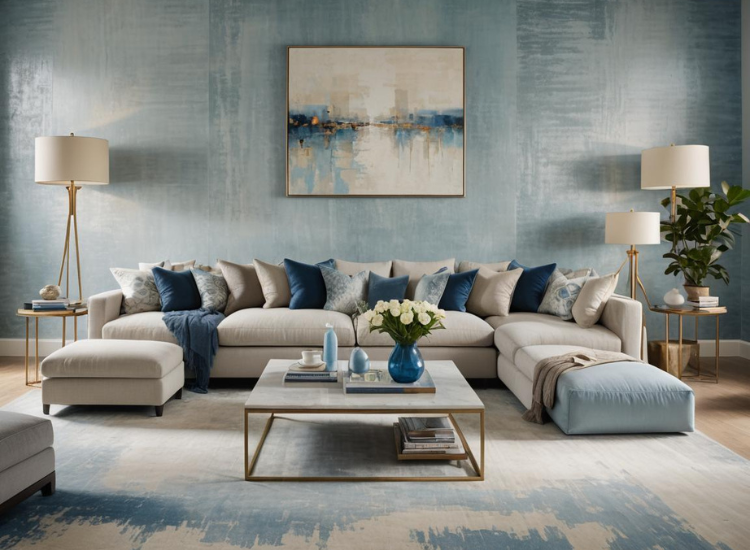
Ever noticed how a well-designed room’s interior design theme can make you want to explore every corner? That is the rhythm in design principles doing its magic. It's like discovering a new trail during a hike, exciting and full of possibilities.
Proportion And Scale: Keeping Things Real
Just like choosing the right size backpack for a trip, proportion and scale ensure that home interior furniture and decor fit perfectly within a space. It's about making sure nothing feels too big or too small, creating a comfortable environment.
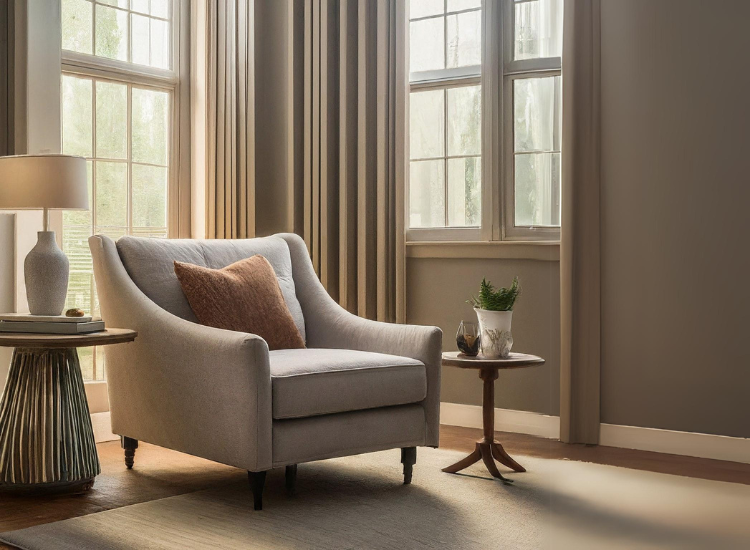
Remember the time you found the perfect chair for reading? It was probably because it hit the right note of proportion in design and scale, making those reading sessions extra snug.
Emphasis: Spotlighting What Matters
Emphasis in design is all about highlighting what's important to us, much like showcasing our achievements or favourite hobbies. The principle of design, emphasis draws attention to key features, making them stand out.

Ever rearrange your room or use light effects to show off a new piece of art or a beloved souvenir? That's the emphasis in design at work, turning ordinary spaces into personal galleries of what we love.
Contrast: Adding Some Spice
Contrast is the spice of life, adding excitement and drama to our spaces. It's like trying a new flavour or taking a different route home - it keeps things interesting.

Whether it's mixing old and new pieces or playing with colours, the contrast in design makes our spaces dynamic and engaging. It's that pop of colour in an otherwise neutral room that wakes up our senses and brings joy.
Details: The Cherry On Top
Details in design are the little extras that make life special, like finding the perfect quote in a book or noticing a beautiful sunset.
In design principles, paying attention to details adds character and depth, transforming the ordinary into something extraordinary.
Think about how a unique door handle or a beautifully crafted light fixture can elevate a space, making it uniquely yours. Those final details are what make a house a home.
These principles of interior design aren't just for the pros; they're for all of us, impacting our lives in ways big and small.
How Do These 7 Principles Of Design In Commercial Interior Design Impact Our Lives?
Let's shift gears a bit and talk about how those seven principles of design we've been discussing play a huge role in shaping our experiences in commercial spaces.

Whether it's a cosy café, a sleek office, or a bustling retail store, these principles are at work, subtly influencing our interactions and experiences. Let's dive in and see how!
Balance: Creating Equilibrium
Imagine entering a restaurant where each aspect of the space feels proportioned with symmetry in design, not too strenuous but not too empty.
This is what balance does for a space. Crafting a space that is inviting and makes you wish to stay longer.
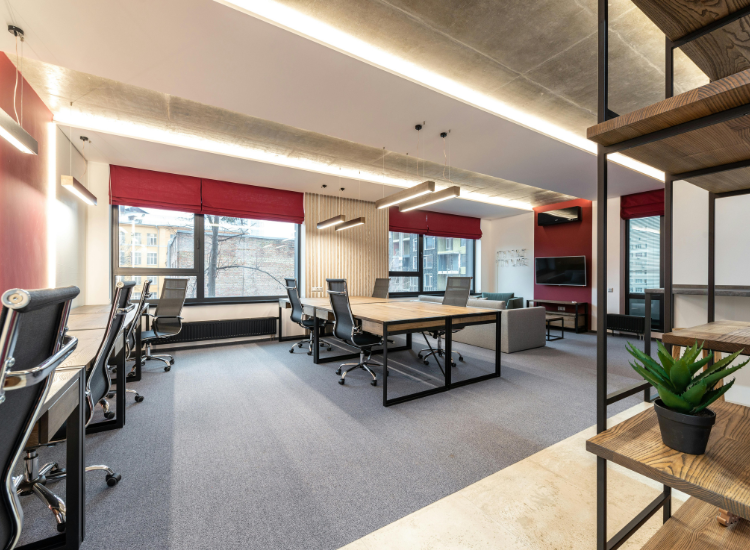
In commercial interior design, balance is illustrated in the placement of furnishings and décor that promotes comfort and functionality.
This thoughtful arrangement not only makes customers feel welcome but also enables employees to work efficiently.
Harmony And Unity: Crafting Cohesion
Ever walked into a store and felt an instant connection, as if everything just belonged? That feeling likely comes from the harmony and unity woven into the design, creating a space where every corner invites you to explore.
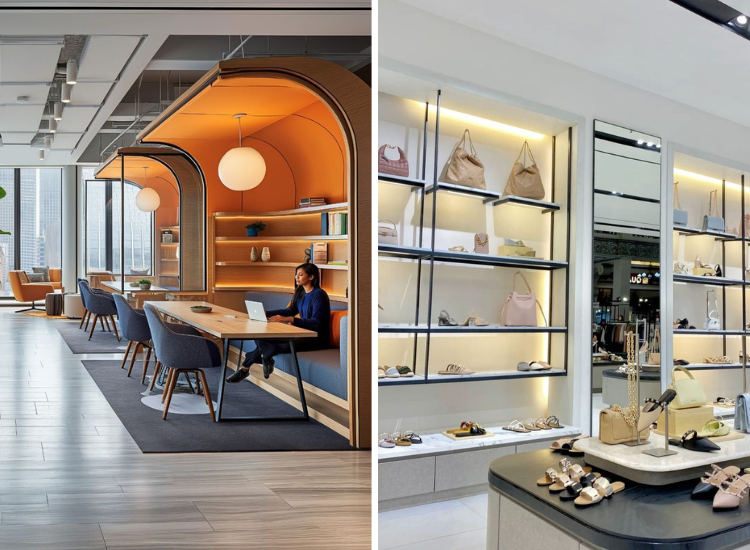
Harmony and unity in design are in place when a business maintains a consistent style, colour palette, and branding throughout the store and all of their visual presence, providing the customer with a cohesive experience.
Rhythm: Guiding The Flow
Some businesses are much like a music composition as they employ rhythm in design principles of their commercial space.
For example, a business may work regarding how the consumer flow works through the space; and as they guide you through the space. You may find yourself engaged with their visual merchandise.

Employing the rhythm in design will assist in creating a definite flow that will optimize the consumer journey and also, could assist with maximizing sales.
Proportion And Scale: Ensuring Functionality
Proportion and scale are the design features that you wouldn’t want to be without.
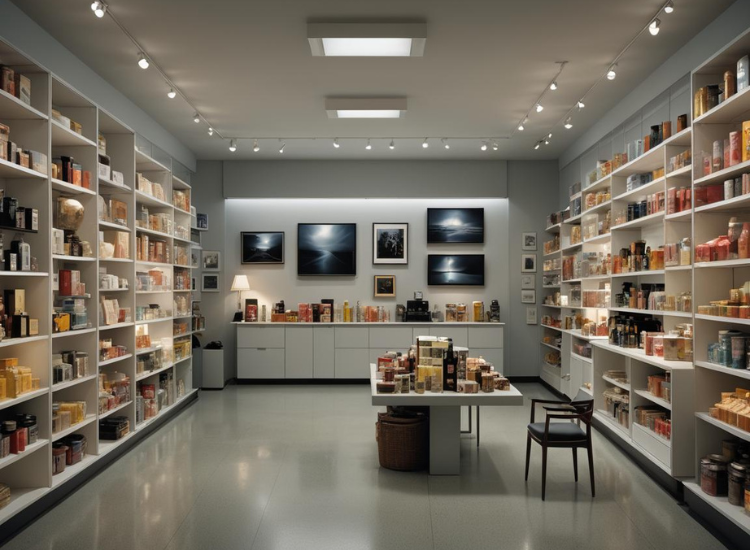
Retailing in the commercial sector you would want to ensure that your physical store furniture, containers, and visual presentation are fit to the sizing of the space, and the people who will be using the space.
Proportion and Scale have a dual purpose of being visually appealing but also being practical and usable aspects.
Emphasis: Highlighting What Matters
Sometimes your physical space or your products are the star and your emphasis is creating a spotlight on those things.

Emphasis in design is used within commercial design to focus your customer's eyes and attention on places in the store and draw their attention to product or store aesthetics.
The beautifully lit wall, and the well-placed promotional signage, are all examples of how emphasis can be used.
Contrast: Adding Interest

Contrast goes a long way and helps add variety to a commercial space. This could be a vibrant accent wallpaper in a neutral office or a bold product display against a muted backdrop.
In the end, contrast gives the space more depth and interest, which makes the space more engaging and memorable
Details: Finishing Touches
Details are what bring character and fun to the commercial interior. They're the custom light fixture, client-provided art, and the custom branded sign – small things that bring character and personality.

Focusing on the details helps to enhance the experience of the space, it creates a more immersive and personalized experience and ultimately helps a business stand out.
Key Takeaways: Principles Of Interior Design
- The principles of design include Balance, Unity, Rhythm, Emphasis, Contrast, and Proportion.
- These design principles create harmony, functionality, and aesthetic appeal in any interior.
- Balance and proportion ensure spatial stability and visual alignment.
- Contrast and emphasis highlight focal points and add dynamic interest.
- Rhythm and unity guide visual flow and reinforce the design theme.
- Mastering the principles of interior design transforms ordinary spaces into intentional, inspiring environments.
Conclusion
In exploring the principles of interior design, we've uncovered how these foundational concepts transform spaces into more than just physical areas—they become reflections of our lives and personalities.
From the harmonious balance that makes a room feel just right to the unity that ensures every element works together seamlessly, these design principles guide us in crafting environments that are both functional and aesthetically pleasing.
Embracing these principles allows us to blend form and function, creating spaces that are not only visually stunning but also resonate with the essence of their users.
Whether you're designing a cozy home or a bustling commercial space, applying these principles thoughtfully ensures that every corner is a true expression of its purpose and character.
FAQs
The quickest trick is to evenly distribute your furniture and decor. Try placing similar-sized items on opposite sides of the room to create a natural sense of balance.
Yes, a focal point gives the room purpose and direction. It could be a fireplace, a piece of art, or even a statement piece of furniture.
In set design, lighting plays a pivotal role in establishing the scene's atmosphere. It helps guide the viewer's attention and reinforces the narrative through visual storytelling.
Throw in some contrasting elements or textures to break up the uniformity. It adds personality and keeps the room from feeling too predictable.
Use lighter colours and mirrors, and avoid heavy, bulky furniture. This helps open up the space and makes it feel airier.
Not necessarily—contrast can also be created with textures, like pairing smooth and rough surfaces, or mixing modern and vintage pieces.
If the furniture and decor feel well-balanced and nothing seems too big or small for the space, you've nailed proportion in design.
